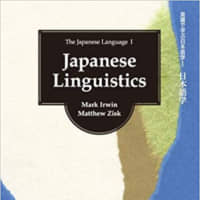English books on the Japanese language are not in short supply, but this one is different. Being neither another monograph for specialists nor a how-to book for the airport reader, Mark Irwin and Matthew Zisk's "Japanese Linguistics" is somewhere in between — and that's what makes it such a useful read.
Japanese Linguistics, by Mark Irwin & Matthew Zisk.
286 pages
ASAKURA PUBLISHING, Nonfiction.
Apart from the core topics of linguistics — pronunciation, grammar and vocabulary — a number of other areas are covered. A whole chapter is dedicated to writing, where the authors not only provide an up-to-date description of the well-known complexities of putting Japanese on paper (or elsewhere), but also illustrate how the Japanese writing system has left its mark on the language as a whole.
Another noteworthy feature is the strong focus on Japanese in its social context. In fact, there are three full chapters on the topic, covering everything from anti-honorifics and "role language" to language software and nonverbal communication.
"Japanese Linguistics" is not only up-to-date, but also takes historical facts into account. For instance, the section "Grammar through Time" helps us see some grammatical quirks in a new light. And after reading this book, you will also understand where the "-ō" in phrases like ohayō (good morning) and arigatō (thanks) comes from.
Taken together, "Japanese Linguistics" is a well-done blend of insightful description and valuable instruction. It will also make for a good textbook in undergraduate classes.


















With your current subscription plan you can comment on stories. However, before writing your first comment, please create a display name in the Profile section of your subscriber account page.